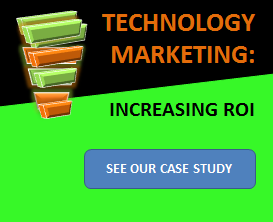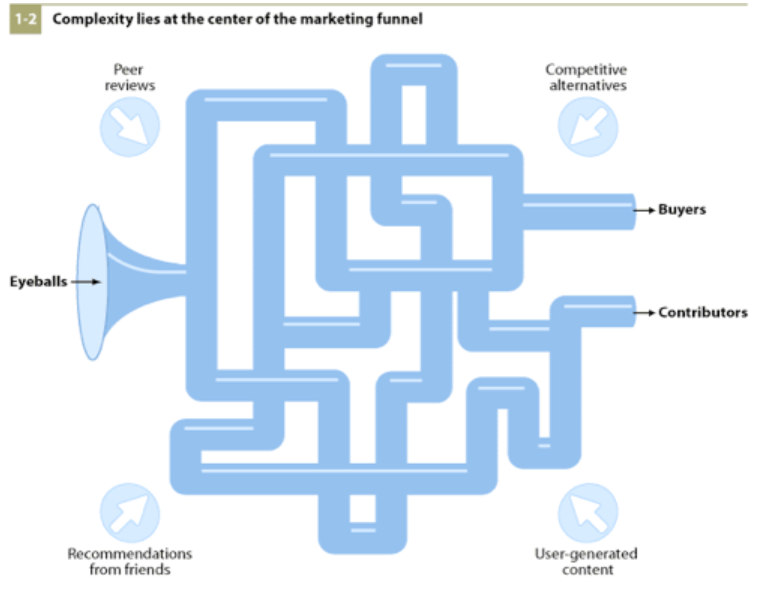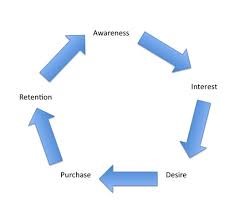Food for thoughts:
- Branding (7)
- Content marketing (19)
- Corporate training (3)
- Crisis Management (1)
- Demand generation (19)
- Digital PR (6)
- Engagement strategies (28)
- Entertainment marketing (2)
- Journalism (12)
- Leadership (7)
- Marketing communications (12)
- Media relations (6)
- Mobile marketing (2)
- Personal branding (4)
- Personal from founders (5)
- Public relations (9)
- Public speaking (5)
- Publishing (5)
- Reputation Management (1)
- Sales (19)
- Sports marketing (3)
- Thought leadership marketing (3)
Recent Posts
- Customer Service Is The New Marketing. It Goes Further, Is More Social & Data Centric
- Webinar: Rethinking The Sales Funnel and Redefining the Rules Of Selling
- What’s Next In Advertising & Customer Tracking Tools? A Revision for Analytic Tools and an Evolution for Lead Scoring
- Marrying CRM with Social Media, Product Launches with Content, Marketing with Sales
- Selling Despite Distractions: Customer Retention and Repeat Sales
Is Sales Funnel Still the Best Way to Describe the Path to Conversion?
9 Dec2013
Do your Sales & Marketing teams need alignment & ability to make better business decisions?
Do YOU need peace of mind?
- Optimize your marketing and sales processes
- Boost your career and earnings
- Improve your team cohesion and performance
- Regain work-life balance and thrive
- Understand yourself and others as never before
By Jan Hutchins, speaker & CEO of SocialAgenda Media.
Everyone calls it a sales funnel but not everyone believes funnel is the right analogy. Many say the funnel has been leaking for years, doesn’t reflect the changes brought about by the Internet economy and is still in use only because we haven’t agreed on a better description. Enough thoughtful marketers have challenged the funnel analogy it’s worth diving into this question to see what we can learn from a varied group of sales and marketing pros experiencing the real shape of selling. We invited the following marketing experts into this conversation:
Glen Caruso, Vice President of Sales at BLiNQ Media. BLiNQ’s proprietary software and algorithms work hand-in-glove with Facebook technology to deliver social engagement advertising and analytics solutions for agencies and big brands on Facebook.
Scott Hirsch, VP Product & Content Marketing at Get Satisfaction. Get Satisfaction is the community platform that helps companies create engaging customer experiences by fostering online conversations about their products and services at every stage of the lifecycle.
Kristen Ortwerth-Jewell, Interactive Marketing Manager at Nexant. Nexant is an independent provider of intelligent grid software and clean energy solutions.
Cezar Kolodziej, President and CEO at Iris Mobile. Iris Mobile is pushing the bounds of traditional text messaging by enabling retailers to send more robust content using image and video messages.
Barbara Pilliod, VP of Marketing & Communications at Transfinder. Transfinder does school bus routing software including GPS fleet tracking, fleet maintenance, and field trip management for pupil transportation.
Cindy Sterling, Director of Marketing and Sales at On Center Software, Inc. On Center Software has been a trusted provider of construction automation management (CAM) solutions for the past 25 years.
Stephen Debruyn: Vice President of Marketing at Clarity Consultants, Clarity provides learning and development expertise to global corporations.
SocialAgenda Media: Do you believe calling it a sales funnel is an effective description of the process? If so why? If not, why not?
Stephen Debruyn: During the past several years, there has been a lot of talk about this issue, and there are those who say the sales funnel is ‘dead’, and have come up with alternative visual imagery, such as this one by Forrester:
But I don’t think the sales funnel is ‘dead’. It has changed in the sense that buyers now tap into many more channels to inform themselves about specific products or services, and tap into sales very late in the buying process. I believe the principle underlying the funnel is still the same; potential buyers still move through a process from awareness to interest to desire to action related to a service or product; move from a general information need to increasingly more specific information needs; and move from a passive role to an increasingly active role in the buying process.
Kristen Ortwerth-Jewell: I think that the sales funnel is still an apt description for the lead lifecycle, especially for Enterprise B2B, where the size of the transaction precludes any single-buyer sign-off or ecommerce. The sales cycle for us still tends to be very long and fairly linear in progression. What happens at the top of the funnel between the point of lead acquisition and the point of transition to an identified sales opportunity seems to be the only part of the process that has impacted our lead nurturing strategy.
Scott Hirsch: The funnel analogy exists because it’s an easy one to understand. So for instance, you start with raw leads at the top of the funnel, some fall out because they are not qualified, more fall out because you aren’t the right fit, and some you just don’t win. New Revenue comes out of the bottom of the funnel. This is an easy report to generate, understand, and run. However, it’s actually not the best analogy because buying behavior is a complicated process that takes time. And as a marketer, you have many opportunities to influence the way your buyer perceives not only your solution, but also their business situation throughout the funnel. In other words, just because someone isn’t qualified today doesn’t mean they aren’t part of our audience. You can influence them and make them qualified tomorrow.
Glen Caruso: No. With social media and one-to-one, ongoing marketing, I believe it’s more of a sales cycle… because it’s a continuous relationship. To consumers today, a brand has to essentially become a “trusted advisor/friend”. Genuine. Honest. Anything that smacks of advertising is rejected… especially by Millenials. Additionally, with so much choice and so much parity of product, you have to stay in touch. That said, marketing today — like a friendship — has to have a long-term flow to it. You must continue to be involved — maintain AWARENESS — in your friends/customers lives. You don’t disappear until they need you again.
I think this diagram is a good visualization:
Barbara Pilliod: It still is a description of the process marketing and sales use to move a prospect forward. While it may be linear, there are many offshoots of the process that come into play. It’s just hard to integrate them all into a clear process that leads to decision and purchase.
Cindy Sterling: The objectives of marketing fall really into 2 major buckets – Brand Identity (Corporate) and Customer Acquisition/Retention (Field). The sales funnel analogy by definition would fall into Customer Acquisition & Retention. The label that gets placed upon the process of identifying, contacting, nurturing, and qualifying business should clearly keep everyone focused around a common goal – I think sales funnel does exactly that.
Cezar Kolodziej: There is no doubt that consumer behavior has changed and fundamentally the number of touch points have drastically increased thus causing a lot of debate around the purchase funnel and its validity. In 2011, the average consumer looked at 10.4 sources of data before making a decision to purchase, compared to 5.3 in 2010. That being said, the customer journey has never been completely linear, so even in today’s complex world the purchase funnel does continue to add value due to its simplicity. This is especially true if we look at the concept not from a path perspective, but use it as a tool to describe the ultimate outcome we want to achieve as marketers which is purchase persuasion.
SocialAgenda Media: Even if you believe funnel is an appropriate term what other analogy or analogies do you feel apply and why?
Scott Hirsch: A better analogy is building audience. I think of this the same way that a television show builds audience. You need to have interesting content and characters (content and influencer marketing), you need to speak to the times (topical content); you need to stay engaging and not just ride on past success (staying on trend and relevant as new memes emerge).
Cezar Kolodziej: Another way to breakdown the decisions that lead to a customer purchase is the Customer Life Cycle across Marketing. Forrester’s latest series of reports focuses on the outcome of the decision as influenced by non-linear touch points.
Stephen Debruyn: In terms of visualization of this process, one could question whether prospects move down the funnel, or whether they climb up the funnel, and can fall out of it at any time in the process. Market research firm Marketingsherpa sees the process as an inverted funnel, where prospects fall out of the funnel if they don’t respond to a call to action on a landing page, don’t act, don’t follow up, etc.
Cindy Sterling: A sales funnel does give imagery of ‘dump leads in the top and force deals out the bottom’. I think the visual of a buyer’s journey resonates for me. We want to identify the right profile for who typically matches our typical client/buyer and then begin interacting with them in a variety of ways. It never makes sense to force information onto people, it is better to share information when a person is interested and looking. This results in a healthier exchange where there is a need and a solution is identified, evaluated, and selected.
Barbara Pilliod: Touch points is the only analogy I can think of as there are so many and many are needed to bring a prospect to the table – marketing call, email for special event or webinar, online incentive, video feed, news release, article, social media, online search – these are all potential touch points that are circular rather than linear.
Kristen Ortwerth-Jewell: I think lifecycle might be a more appropriate term across the board, given that any lead or account could go dormant and cycle back to life at any point between lead identification/acquisition and close of sale.
SocialAgenda Media: What comes after the funnel? What analogy is appropriate for the personalized, sustained engagement customers now demand for retention and repeat sales?
Cezar Kolodziej: Even after the initial purchase decision, the conversation with the brand never stops and it can be argued that we end up in a circular conversation with the customer to get them back to purchase. The fundamental factor is continuous engagement and ensuring the message is being delivered consistently across touch points.
Stephen Debruyn: Possibly an ‘engagement ladder’ that visualizes the degree of engagement. Buyers can simply be repeat buyers or they can turn into evangelists for a company’s products and services, a much more active role. I have created a ‘social media engagement ladder’ that visualizes the engagement steps and the associated measurement metrics or KPIs.
Kristen Ortwerth-Jewell: I don’t really believe there is such a thing as “after the funnel.” A signed contract means only one thing: as the incumbent, the relationship you have built with your customer gives you a slight edge over the competition when that contract expires. In most cases, this means they just cycle back to the top of the funnel as a better-informed prospect. When the buy cycle starts over again, you’re still providing the thought leadership materials and market awareness materials that won them over the first time.
Cindy Sterling: Once we bring on board a new client we immediately engage in training and ramping of skills. In certain situations, we have professional services engaging with the clients and of course we have 24hr business day support.
Scott Hirsch: I like to use a concierge analogy, where the company becomes a facilitator (rather than the source) of relevant information and services for their customers. Think about it… a hotel concierge doesn’t really provide services, but they do make your life a lot easier and your stay at the hotel more satisfying by recommending a great restaurant or coordinating that special tour of the city. B2B marketing has already started to adopt this principle with the rise of content marketing … marketing campaigns that are designed to educate and illuminate, rather than to sell. Similarly, a consultative sales approach that keeps the customer business need front and center is also like a concierge service.
Barbara Pilliod: I still think Touch Points is the answer – every customer should have a set number during the year to ensure we meet expectations.
Glen Caruso: After the sale, try to bring to the customer periodic offerings from your company that make sense given their goals… as well as general information that will help them look smart. Bring them articles and thoughts about things that in NO WAY benefit your company. Have you ever received a card or letter in the mail from a friend with a funny cartoon in it? Or a clipping from a newspaper with a relevant article that relates to something you talked about a month prior? It’s the same thing with our business. Everyone likes to feel as if they are being heard and thought about. And they like it when it seems like it comes from a selfless perspective. Someone thought about ME and what’s important to ME and sent me something out of the goodness of their heart that makes ME feel better.
* * * * *
Also read:
- Dirty Little Secrets on How to Shorten B2B Sales Cycle: Interview with Sharon Drew Morgen on Buying Facilitation
- 50+ Things Every Demand Generation Manager Should Do Before The Next Budgeting Cycle So They Look Brilliant In the Boardroom
- 9 Awesome B2B Marketing Tips: Steps To Undertake To Penetrate Your Sales Channel In 90 Days
- Make Content Your Most Valuable Sales Rep: Marketing-Sales Alignment Tips for Engagement With Your Audiences & Boosting Closing Rates
- B2B Content Marketing Lessons & Strategies for 2014: Interviews With Thought Leaders
- Marketing to the Internal Audience – From Low ROI To Cost-Effective Corporate Training
- Leadership The Steve Jobs Way: iLeadership for a New Generation – interview with ex-SVP of Apple, Jay Elliot
- In: Content marketing|Demand generation|Engagement strategies|Sales|Thought leadership marketing
- Tags: apple, b2b sales, branding, building brand, business development, content, content marketing, demand generation, lead generation, leadership, marketing, mobile, sales, sales funnel, sales pipeline, sales training, selling, Social media marketing, socialagenda media, speaker, speakers, thought leadership
Comment Form
Copyright ®2008 - Demand Generation done right - Log in
Powered by WordPress | Evidens [White] Theme by Design Disease for PremiumThemes.com



Connect with us: